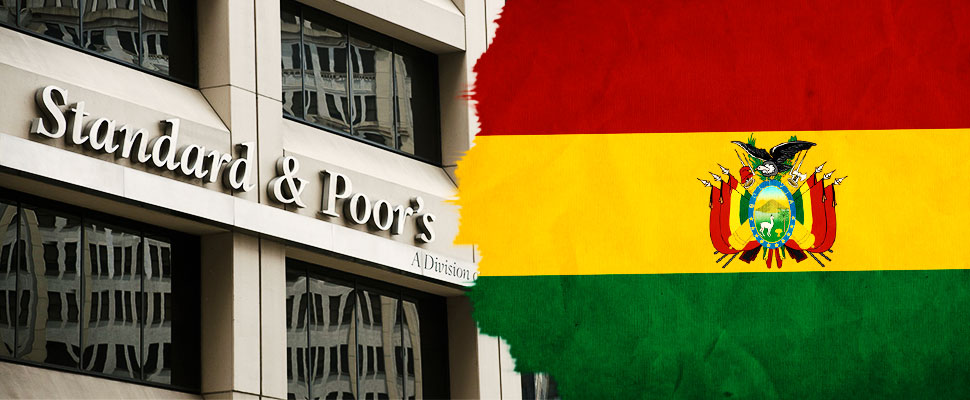Why did Standard & Poor’s lower Bolivia’s credit rating?
The rating agency decreased Bolivia's rating as a result of a continuous trade deficit

Standard & Poor's, one of the 'big three' rating agencies, last week reduced the credit rating of Bolivia, which goes from BB to BB-. For the agency, the change responds to a "weak position of the country in the external sector", arguing that a deficit in the trade balance threatens to reduce the country's growth in coming years.
Leer en español: ¿Por qué Standard & Poor’s redujo la calificación crediticia de Bolivia?
The role of a credit agency, such as Standard & Poor's, is to offer an expert opinion about the payment capabilities of a country in debt. A country's ability to pay depends to a large extent on the economic situation it is in, and for this reason credit agencies update their ratings every year.
Ratings range from AAA, which indicates less risk, to C, which indicates more. Those that are in the range of AAA to BBB are considered low risk, and suggest to potential lenders that there is little doubt about the effective payment capacity of their counterpart. On the other hand, those that are between BB and C suggest that countries have a certain degree of vulnerability and can be difficult to pay the debt acquired.
For countries, maintaining a high credit rating is an important task, since it is from this evaluation that lenders establish the interest rate with which their loans count.
It may interest you: What are the richest Latin American nations?
A call for attention
Bolivia, consequently, must interpret the fall in its rating as a wake-up call from rating agencies about the impact that their policies in the external sector may have on their debt payment capabilities. Consequently, and with immediate effect, the interest rate that Bolivia will have to pay for any new loan it receives will be higher to compensate for the increased risk faced by the lender.
In a press release, the agency Standard & Poor's said that what can become the main cause of uncertainty for potential lenders is the significant deficit that Bolivia handles in its trade balance. Standard & Poor's argues that the privileged position that Bolivia had acquired during the commodity boom has already begun to weaken, given the reduced profitability that this type of exports represent in the present.
In addition, the agency cites that a strong politicization of the economy continues to represent risk for both investors and lenders. They classify decision-making processes as 'highly centralized', something that could cause problems for investors due to a perceived lack of counterweight to central government decisions regarding their investments.
Finally, one could cite Bolivia's high dependence on its hydrocarbon exports, particularly natural gas as one of the main causes of volatility in its economy. The prices of natural gas have a strong correlation with those of oil, and therefore fluctuate a lot, generating instability in an economy that depends on them to maintain their growth.
The positive side, a stable outlook
Although the reduction in the rating can be interpreted as an increase in distrust towards the current circumstances of the country, Standard & Poor's improved the rating of the investment outlook from 'negative' to 'stable'.
This rating differs from the credit rating in that it measures a country's prospects for investment, and not its capacity to pay debt.
The denomination of 'stable' is granted to Bolivia due to a normalization in the annual growth rate of GDP, which had been falling since 2013, but which is now projected to remain around 4.7% per year.
Latin American Post | Pedro Bernal
Translated from “¿Por qué Standard & Poor’s redujo la calificación crediticia de Bolivia?”





